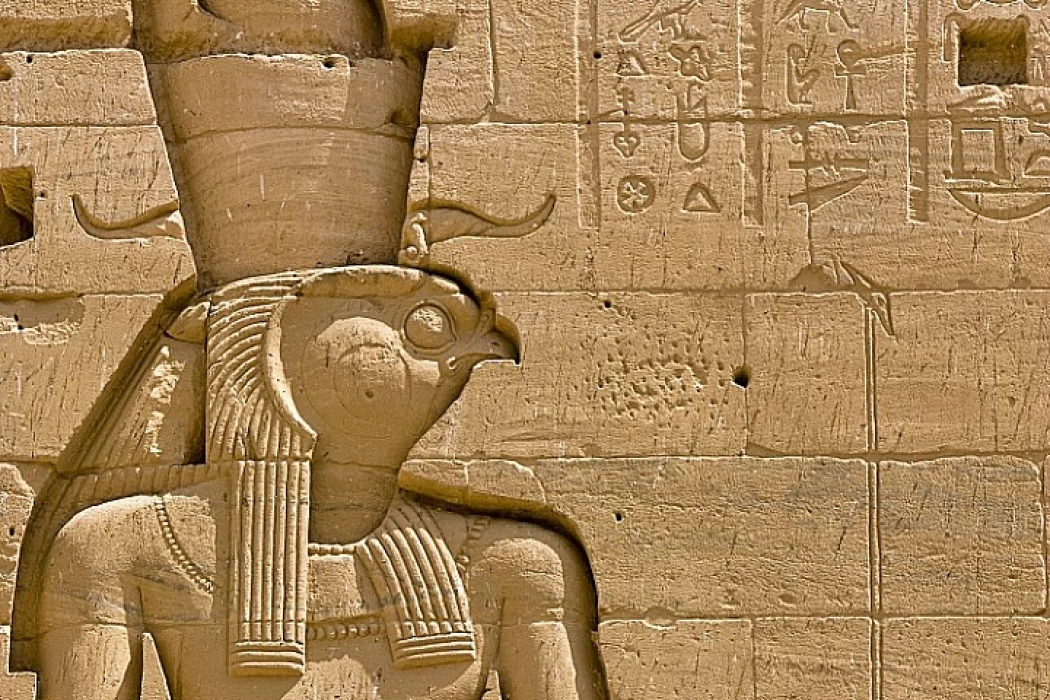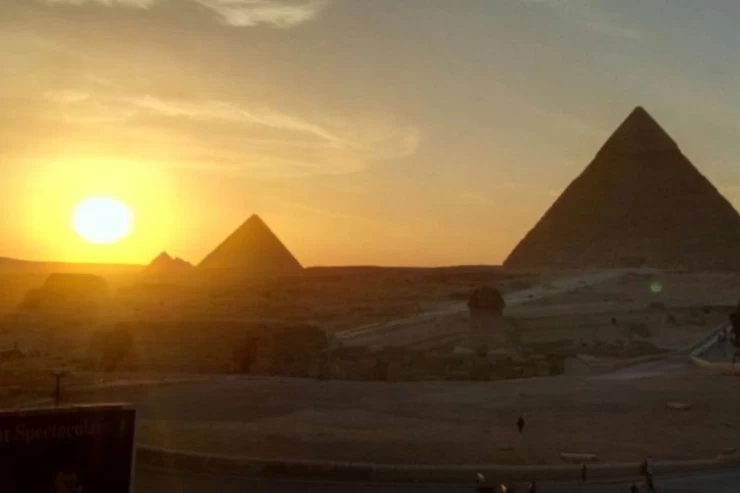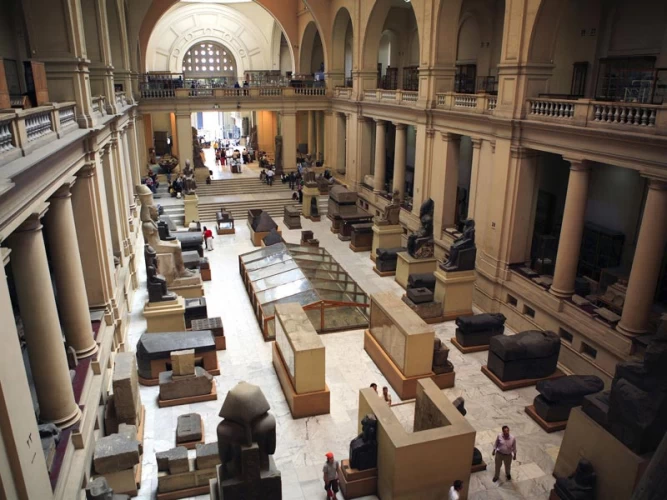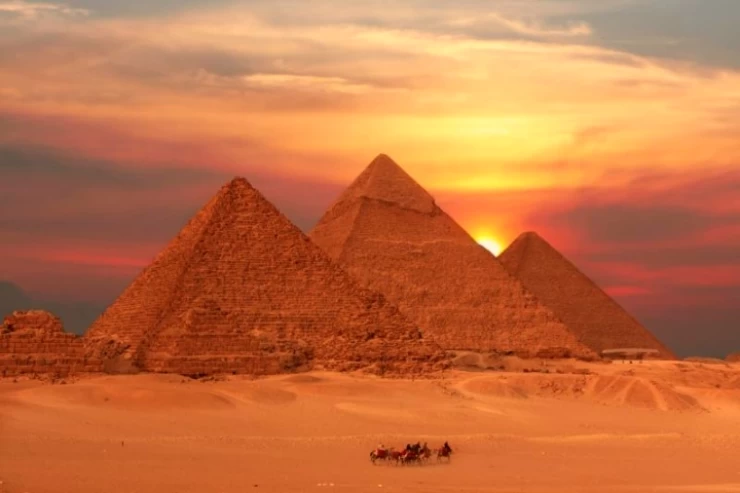
Deus Amun Ra | Amon Re Deus do Antigo Egipto
O seu nome significa "o escondido", Amun é uma divindade muito antiga com características guerreiras. A partir do Reino do Meio ou talvez antes, especificamente durante a 5ª dinastia, tornou-se a divindade principal no Egipto e de Tebas também durante o novo reino, tomou o nome de Amun-Ra e as características do Deus criador. É o esposo de Mut e o pai de Khonsu, formando a famosa tríade Theban com estas divindades do antigo Egipto.
Amun era o nome de uma divindade da antiga religião egípcia, que se tornou uma das divindades mais importantes da história do Antigo Egipto. Os antigos egípcios retratavam o deus Amun em várias formas. Amun apareceu como um homem com cabeça, cabeça, rã, carneiro, um homem com uma coroa de avestruz, e um ganso.
Começou como deus do ar e da fertilidade tebesiana, cujo poder cresceu à medida que a cidade de Tebas cresceu de uma pequena aldeia no antigo reino para uma poderosa metrópole no Médio e Novo Reinos. Levantou-se para se tornar membro dos oito deuses colectivamente chamados os Ogdoad de Hermopolis. Tornou-se então membro dos três deuses referidos como a Trindade de Tebas. Nessa altura foi chamado o patrono dos Deuses do Faraó e acabou por ser combinado com o deus Sol Ra, que era a divindade soberana do Velho Reino, para se tornar Amun-Ra, rei dos deuses e governante da Grande Enamada. Amun-Ra foi saudado como um deus nacional, o criador do universo, o protector pessoal do Faraó, e o deus da guerra.
O Templo de Karnak era o templo mais antigo de Amun. A sua reputação vai muito além das fronteiras do Egipto. O seu culto espalhou-se pela Etiópia, Núbia, Líbia, e grande parte da Palestina. Os gregos acreditavam que era uma manifestação egípcia do seu deus Zeus. Até Alexandre o Grande pensou que valia a pena consultar o oráculo de Amon quando ele precisava de provas poderosas para se tornar o rei faraó do Egipto, o templo do oráculo em Siwa Oasis, no deserto ocidental egípcio, é uma prova de quão importante este deus era para todos os egípcios.
Viaje agora ao Egipto para visitar as antigas maravilhas egípcias e locais magníficos, templos e pirâmides construídos no início da história e aprender mais sobre a complicada mitologia e as centenas de deuses e deusas adorados na terra dos faraós.
Os Deuses do antigo Egipto eram muito semelhantes aos humanos que amavam e odiavam, sentiam ciúmes e lutavam, vingaram-se, mataram e também morreram durante um mito espantoso cheio de acontecimentos, actividades e acontecimentos dramáticos que inspiraram os realizadores e produtores de cinema modernos a criar filmes mundialmente famosos sobre a grandiosidade dos Faraós e dos Deuses que adoravam.
Gostaria de viver uma viagem através da cultura e mitologia egípcias antigas? pode fazê-lo acontecer e passar um dia a visitar o Templo de Karnak, Luxor, Assuão e Gizé para ver muitos locais no Egipto como os túmulos dos Faraós adornados com cenas muito claras, detalhadas e belamente pintadas das várias divindades do antigo Egipto, bem como muitos outros locais, cidades, aventuras e coisas para fazer no Cairo, pode tentar reservar um dos nossos pacotes de viagens ao Egipto e muitos grupos privados de excursões guiadas de um dia no Cairo a partir do aeroporto e de um dia no Egipto para explorar a capital do Egipto, Cairo pode verificar muitos dos itinerários do Egipto ou fazer uma das nossas excursões de um dia inteiro no Cairo, como por exemplo:
His name means "the hidden one", Amun is a very ancient divinity with warrior characteristics. Starting from the Middle Kingdom or maybe before, specifically during the 5th dynasty, he became the principal deity in Egypt and of Thebes during the new kingdom as well, he took the name of Amun-Ra and the characteristics of the creator God. He is the spouse of Mut and the father of Khonsu, forming the famous Theban triad with these deities of ancient Egypt.
Amun was the name of a deity in ancient Egyptian religion, which became one of the most important deities in Ancient Egyptian history. The ancient Egyptians depicted the god Amun in various shapes. Amun appeared as a man with a head, head, frog, ram, a man wearing an ostrich crown, and a goose.
It began as Thebesian air and fertility god, whose power grew as the city of Thebes grew from a petty village in the old kingdom to a powerful metropolis in the Middle and New Kingdoms. He rose to become a member of the eight gods collectively called the Ogdoad of Hermopolis. He then became a member of the three gods referred to as the Thebes Trinity. At that time he was called the patron of the Pharaoh's Gods and was eventually combined with the sun god Ra, who was the sovereign deity of the Old Kingdom, to become Amun-Ra, king of the gods and ruler of the Great Ennead. Amun-Ra was hailed as a national god, the creator of the universe, the personal protector of Pharaoh, and the god of war.
He appeared in the Pyramid Texts as a member of the Oedead, an important god at Thebes. His importance began in the Middle Kingdom, when King Amenhotep had compound names with Amun
After the expulsion of the Hyksos, he became the king of the gods. During the reign of Akhnaton, a religious and political revolution broke out against him, but he returned to become the great god of Egypt.
The Temple of Karnak was the oldest Temple of Amun-Re. His reputation goes far beyond the borders of Egypt. His worship spread to Ethiopia, Nubia, Libya, and much of Palestine. The Greeks believed it was an Egyptian manifestation of their god Zeus. Even Alexander the Great thought it worth consulting Amun's oracle when he needed powerful proof to become the Pharaoh King of Egypt, the temple of the oracle in Siwa Oasis in the Egyptian Western Desert is evidence of how important this god was to all Egyptians.
Travel to Egypt now to visit the ancient Egyptian wonders and magnificent sites, temples, and pyramids built at the dawn of history and learn more about the complicated mythology and the hundreds of Gods and Goddesses worshipped in the land of the Pharaohs.
The Gods of ancient Egypt were very much like humans they loved and hated, they felt jealous and fought, they took revenge, killed, and also died during an amazing myth full of events, activities, and dramatic events that inspired modern movie directors and producers to create world-famous movies about the grandeur of the Pharaohs and the Gods they worshipped. Take advantage of this offer and discover the wonders of the blessed land of Egypt, from historical times to the present day.
Amun possessed many powers among the Egyptians. He not only created himself, but the entire universe. Furthermore, after being influenced by the Hyksos, the Egyptians developed a god of war, believing this to be the reason for their strength. Consequently, they chose Amun from among their deities to be the god of war.
The belief in the god Amun was very strong, and there was interest in depicting him in many images, the most important of which was the image of the ram as a symbol of fertility and a symbol of the renewal and flow of water. Appearance of God Amun: A seated or standing man with a crown surmounted by two feathers.
The image may depict a ram or a man with a ram's head. A ram-headed sphinx or a goose, a frog. Lastly, he has blue skin in some of his representations rather than the usual red-brown. Blue was a colour that the Egyptians connected to air and creation.
Amunet, Mut, or Amunet, is the wife of the god Amun or Amun-Ra, and was known as the cow of heaven, which is the feminine name of the word Amun. Their son was the god "Khonsu", the god of the moon among the ancient Egyptians.
The father, son, and wife formed the holy trinity of the city of Thebes, Mut, or Mut, which means "mother" and is the mother of the gods in ancient Egypt. Its pronunciation and name changed over thousands of years in several cultures and civilizations She is often depicted as an Egyptian eagle, a white eagle.


















